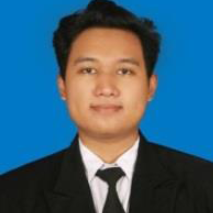
Ridho Nur Rohman Wijaya
Work place: Department of Mathematics, Institute Teknologi Sepuluh Nopember, Surabaya, Indonesia
E-mail: ridhonurrohmanwijaya@gmail.com
Website: https://orcid.org/0009-0004-7988-5215
Research Interests:
Biography
Ridho Nur Rohman Wijaya, he is a doctoral student at the Department of Mathematics, Institut Teknologi Sepuluh Nopember, Indonesia. He completed his undergraduate and postgraduate degrees in the same department and college in 2022 and 2023 via a fast-track program. His research interests include image processing and machine learning, but he has expanded his interest to quantum computing. Hence, he continuously works on image processing with quantum representations and aims to develop simple quantum methods as well as the machine learning arena. The outline of what he wants is to be a specialist in quantum image processing and quantum machine learning.
Author Articles
In-depth Study of Quantum Hadamard Gate Edge Detection: Complexity Analysis, Experiments, and Future Directions
By Ridho Nur Rohman Wijaya Budi Setiyono Dwi Ratna Sulistyaningrum
DOI: https://doi.org/10.5815/ijigsp.2025.05.02, Pub. Date: 8 Oct. 2025
Quantum computing is a rapidly developing field with faster computational capabilities than classical computing. The popularity of quantum computing has reached the field of image processing, particularly with a breakthrough method known as Quantum Hadamard Edge Detection. This approach represents a significant advancement in edge detection techniques using quantum computing. Quantum Hadamard Edge Detection is a method that can detect image edges more quickly than classical methods with exponential acceleration. This paper explains the Quantum Hadamard Edge Detection method in detail, including how it is implemented, a time complexity explanation, some experiments, and future research directions. Our experiments utilize a quantum computer simulator and employ four measurement metrics: Structural Similarity Index, Figure of Merit, Entropy, and a Proposed Metric with radius-based features, to detect simple binary images, MNIST images, and the Berkeley Segmentation datasets. We recognize the potential of quantum computing and believe that image processing with quantum representation will make processing more efficient and significantly valuable in the future.
[...] Read more.Other Articles
Subscribe to receive issue release notifications and newsletters from MECS Press journals